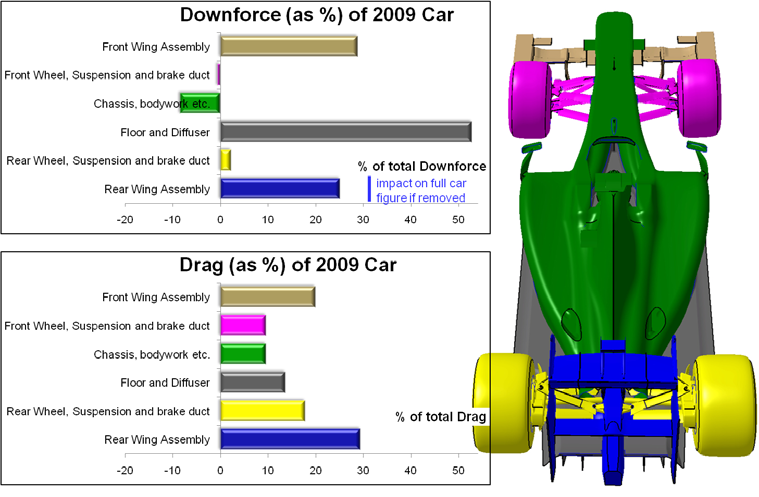DynamicFlow is somewhere on here, though I've not seen him for a while.Blackout wrote: ↑29 Jan 2019, 10:14Wings are useful
The researches RacecarEngineering did (with DynamicFlow Solutions) in 2016 show that skirts (they used mini ones on their different aero configurations) may be very helpful for following and overtaking...
IMO they have many possible benefits and can trigger a positive snow ball effect on the wake, the following car etc.
The covered wheels have benefits too... but the model they used looked like those ugly 2017 indy cars with delta seidepods, big underbody tunnels, covereed floor and wheels etc...
The modified "2017" car was a very good compromise IMO:
https://i87.servimg.com/u/f87/14/79/55/26/222210.jpg
It's the same findings as the original overtaking working group in 2007/08.
And the current overtaking group at FOM lead by Brawn/Symmonds/Somerville along with Tombazis at the FIA."Some very interesting results came out of it and many of them were not intuitive as well. The paddock is full of amateur aerodynamicists, amateur overtaking experts and car wake experts, and actually when you get into the experimentation you find that things were not actually as you expected."
Both then and now the "amateur overtaking experts" called for the underside of the car to be exploited for aerodynamic advantage through the use of ground effects. But the work of the OWG suggested that would be a retrograde step.
"The brief going into the project was that you wanted it all in the floor, all ground effects, and take the wings off the car -- even now everybody says that," Lowe explains. "A lot of the pieces tried were around those themes and we also had the Central Downwash Wing [a concept to split the rear wing into two sections].
"The first interesting thing that came out was that the Central Downwash Wing actually acted negatively on the following car and made it worse, but not far off that was having no rear wing at all. The best thing was to have a rear wing as we did, but refine it by having it narrower and higher. The reason is that the flow structures and the two vortices at the top of the two endplates are very strong energisers of fresh flow to re-energise the wake, whereas if you have no rear wing you end up with a very messy wake that hangs around. These two vortices bring in fresh air from the sides and dispel the low energy wake that's there. So actually you need a strong rear wing and, adjusting a few parameters, you can make it even more effective. That was unexpected.
But people will continue to bash on about how we should only use the underbody to generate downforce on the car. "Get rid of the wings and we'll get close racing," they'll cry. And my favourite, "bring back ground effect!!!" As if modern F1 cars are sitting in the freestream miles above a racetrack.Keeping the wake closer to the centreline of the car isn’t simply an exercise in narrowing the field of turbulence: the significance is, by keeping the turbulent air close inboard, it stays in the zone where it will be collected by the rear wing and thrust upward and, it is to be hoped, over the following car in a phenomenon aerodynamicists refer to as ‘mushrooming’.
“The rear wing helps us when we’re trying to promote closer racing,” explains Tombazis. “It has two strong trailing vortices, which pull the flow up from close to the ground into the ‘mushroom’. This mushroom is pushed upwards quite violently and quickly, allowing clean air to be pulled in from the sides to take the place of the turbulent air being flung upwards. This clean air tends to be higher energy, which has a beneficial effect on the aerodynamics of the following car. “We want to increase that mushroom effect and make it stronger, but also put more of the dirty air into its vicinity to push it up and out of the way.”
EDIT: Sources for quotes - ESPN and FIA Auto magazine - pp36-39



